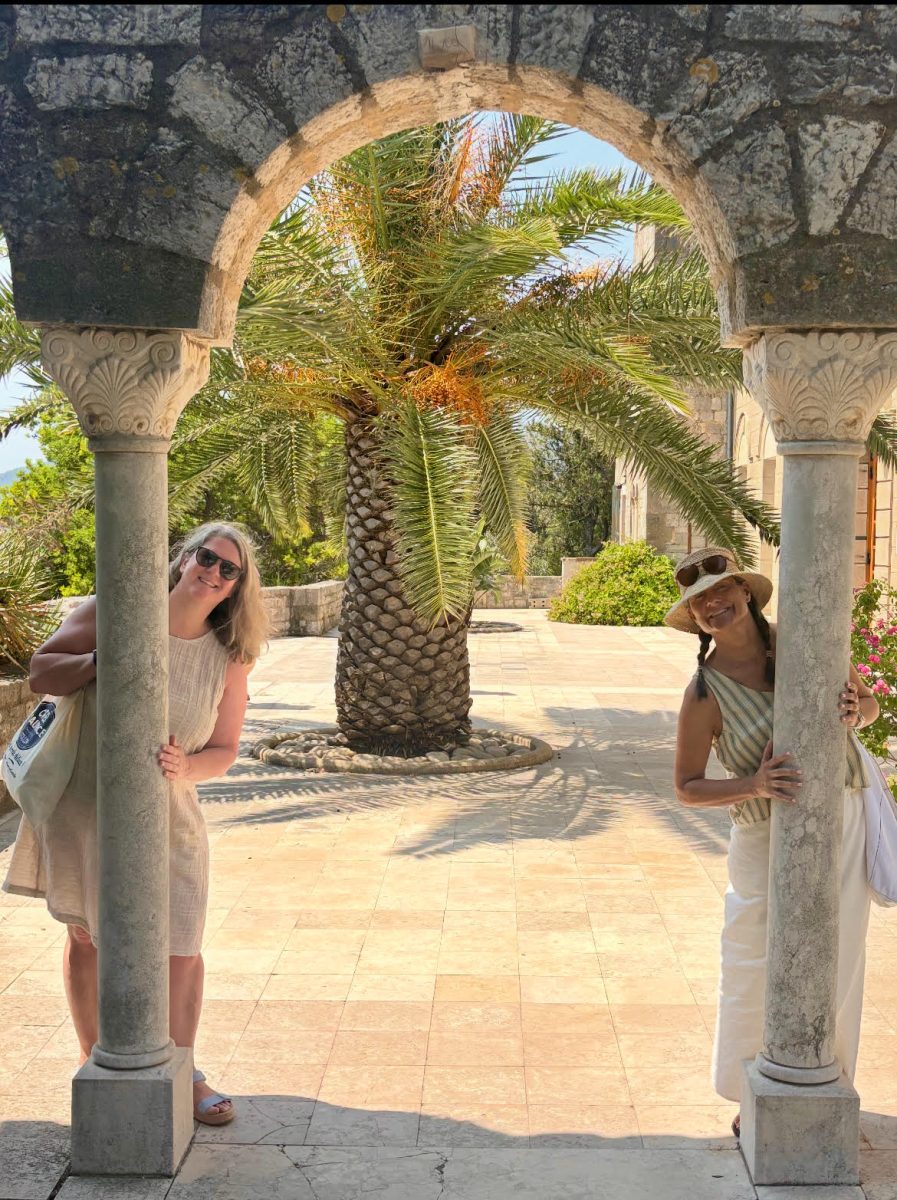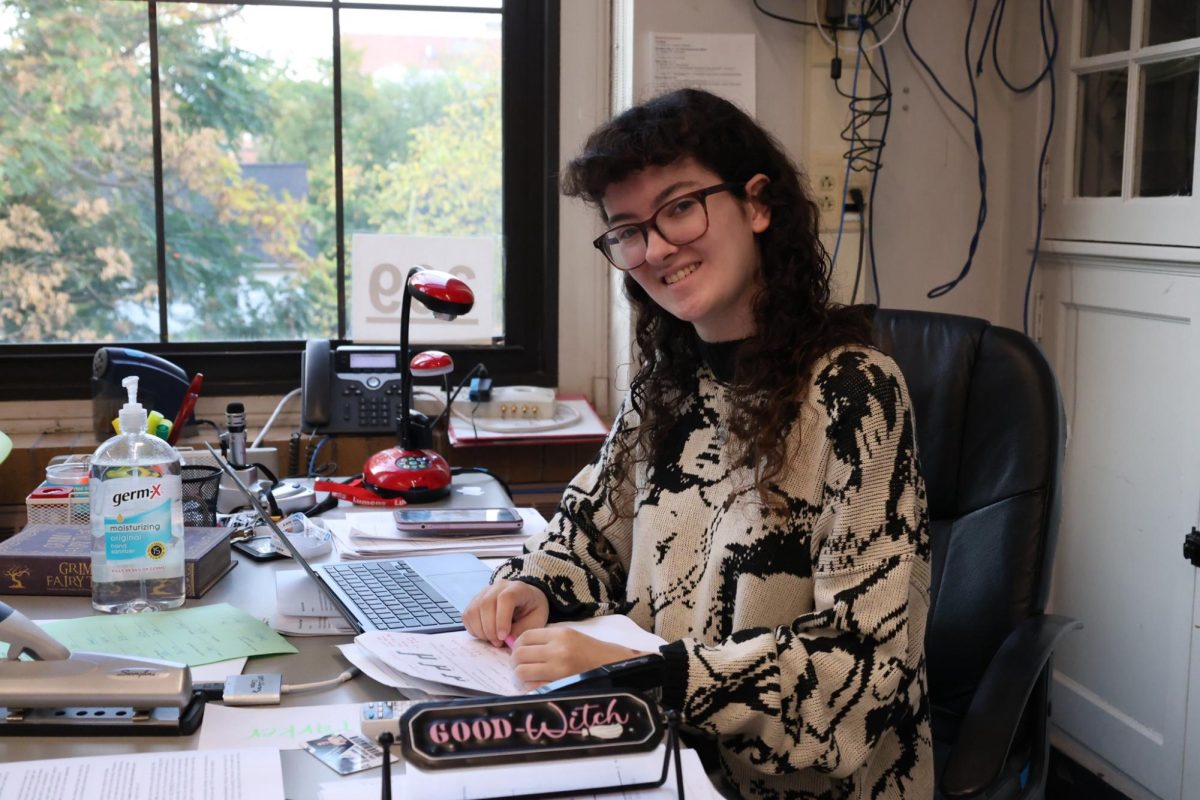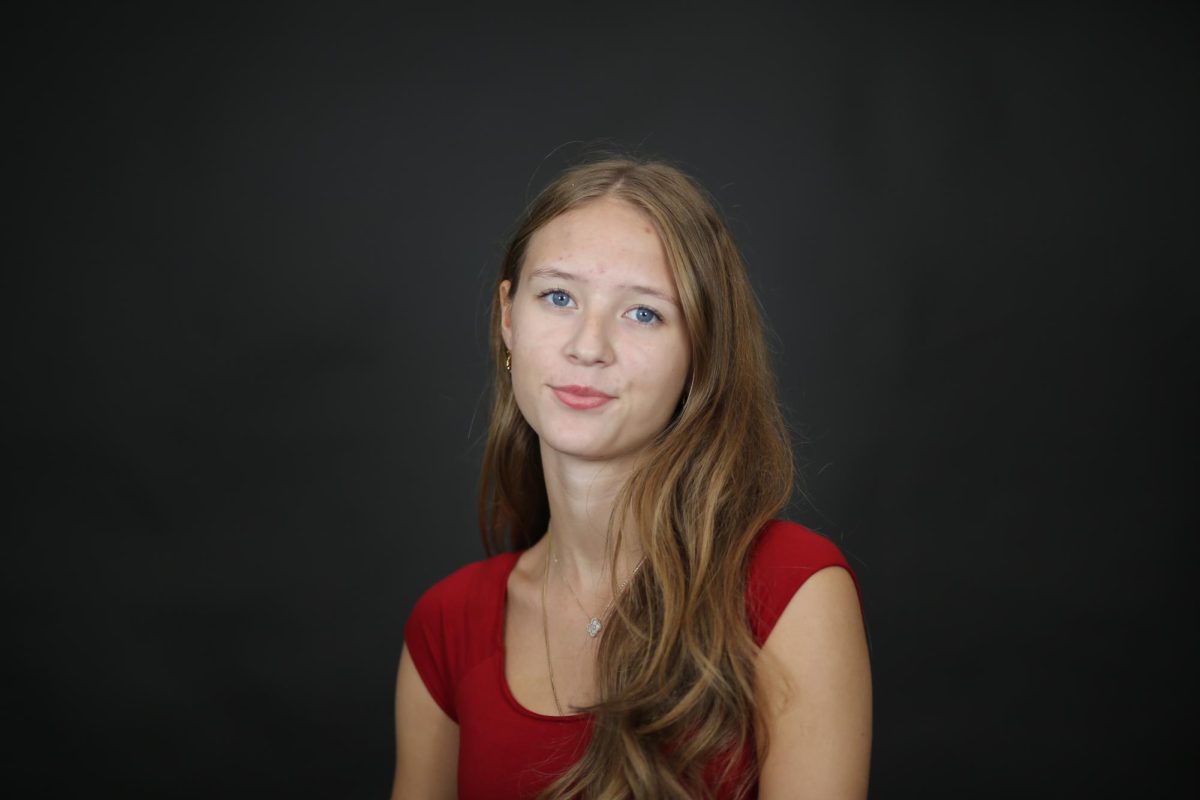The first thing Violet Knyal did on the morning of Nov. 6, 2024, was check her phone. Anxiously opening the news app, she was met with the headline she had dreaded to see: “Donald Trump Wins the 2024 Presidential Election.” Less than 24 hours earlier, she had been at Forsythe Middle School, casting her first-ever vote. Kynal voted for Kamala Harris.
“I had so much hope,” Knyal said. “And at that moment everything just came crashing down.”
Having turned 18 just days before the election, Knyal had her voting plan ready to go. She knew everything, from the local proposals on the ballot to which “I voted” sticker she would choose once she was done. As she filled in her votes, it was as if a wave washed over her. She was no longer a bystander in the election, she was a participant.
“Looking back it’s kind of sad,” Knyal said. “But when I voted I felt powerful. I felt like I was doing my part for the women and trans people in my life, really everyone.”
For Knyal, the election results came as a surprise. With such polarized arguments on topics such as reproductive rights and trans rights, she had believed that people would feel an urgency to get to the polls, especially younger voters. However, this was not the case.
The election had significantly low voter turnout with millions less showing up to the polls than in 2020. But more than a lack of participation, the election saw an undeniable shift towards the Republican Party. A map that had once been speckled with red and blue became overwhelmingly red as countless states leaned towards Trump and his conservative policies.
“It was so much to process,” Knyal said. “I think I went through every stage of grief. At first I was in shock, then I was upset and then I was angry that things happened the way they did.”
U.S. History and Government teacher Chloe Root made a point to debrief the election with her students. Coming into school after election day, she knew students would have a variety of thoughts and feelings and made sure they were given the chance to process them.
“It can be hard to keep the fear at bay,” Root said. “But now we have to try and find hope.”
While in class, Root emphasized the importance of looking at the numbers as opposed to the flashy headlines. For instance, although it was widely known that Trump had won several states, the differences in popular vote at a county level was actually very small. A red advantage of around a 1,000 votes was what determined the outcome.
However, there were dozens of other complexities that played into the final results.
One big complexity was advertising and the presence of social media. With ads constantly flashing across “For You” pages and TV screens, people could easily take in information, factual or not.
Another complexity was the ongoing debate about the Israel-Palestine War. With information circulating online it moved many people to vote for one candidate over the other, or to abstain from voting altogether.
Finally the ballot itself presented a new precedent. With one candidate being a woman of color and the other convicted felon, it was a historical race. And all of these things banded together, creating results that many people didn’t see coming.
Teenagers like Knyal are coming of age in a time of political uncertainty, but this isn’t the first time they’ve experienced it.
In 2016, after Trump had been elected president, Knyal’s mother took her to the women’s march in Washington D.C. At just nine years old, Knyal stood in a sea of pink hats and of women fighting for their rights.
“Being in that crowd is probably a core memory of mine,” Knyal said. “In 2016 when things were uncertain, that crowd of women got together and fought back. We’ll just have to do it again. We will come together, we will continue to show up and we will continue to vote.”
What the next four years will look like is completely unknown. But what Knyal does know is that as long as her voice and her vote still stand, all is not lost.











